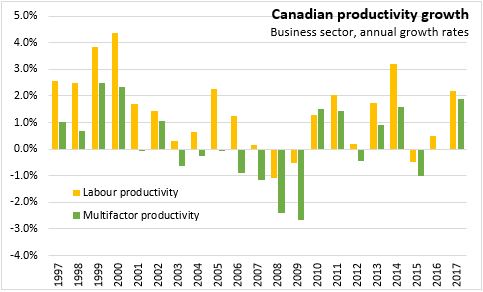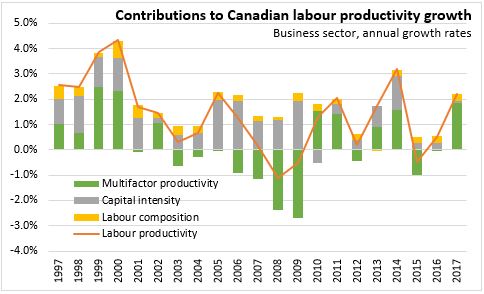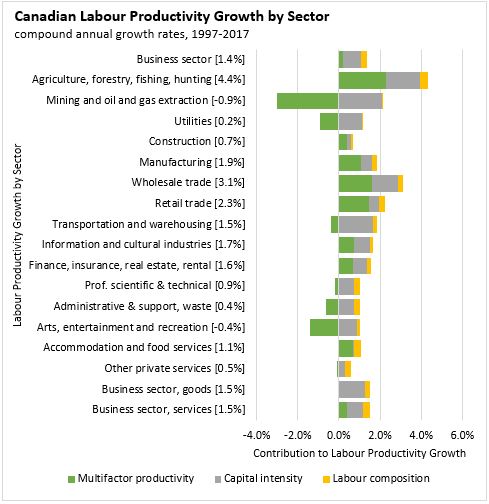The Economics and Statistics Division maintains archives of previous publications for accountability purposes, but makes no updates to keep these documents current with the latest data revisions from Statistics Canada. As a result, information in older documents may not be accurate. Please exercise caution when referring to older documents. For the latest information and historical data, please contact the individual listed to the right.
<--- Return to Archive
For additional information relating to this article, please contact:
March 11, 2019CANADIAN MULTIFACTOR PRODUCTIVITY GROWTH, 2017 Statistics Canada has released its national multifactor productivity and related variables for the business sector for 2017. Multifactor productivity measures are derived using a growth accounting framework that includes measures of how capital input and skills impact labour productivity growth. The residual portion of labour productivity growth that is not attributable to other factors is the multifactor productivity measure. Multifactor productivity (MFP) captures the efficiency by which inputs are used in production.
In 2017, Canadian labour productivity grew 2.2 per cent, while MFP grew 1.9 per cent following two years of decline.

The growth in labour productivity can be decomposed into contributions from capital intensity (capital investment's effect on productivity), labour composition (education and experience effect) and the multifactor productivity that accounts for all other factors including technological change and changes in economies of scale. In 2017, growth in labour productivity was due to a large contribution from MFP. Historically, capital intensity and MFP are the main contributors to growth in labour productivity in Canada. The contributions of labour composition to productivity growth have been relatively stable over time.

In 2017, average labour productivity growth was 3.0 per cent in the goods sector. Labour productivity declined in agriculture, forestry, hunting and fishing due to a decline in MFP. Productivity declined in mining and oil and gas extraction as a decline in capital intensity offset gains in MFP. Construction and manufacturing both saw increases in labour productivity due to improvements in MFP. Average labour productivity rose 1.7 per cent in the services sector in 2017 with improvements in all sectors except professional, scientific and technical services, and administrative and support, waste management and remediation services.

Over the last twenty years, labour productivity has grown by 1.4 per cent (compound annual growth rate, CAGR) in the Canadian business sector. Over this period, the largest source of labour productivity gains are due to growth in capital intensity. Goods sector labour productivity grew by 1.5 per cent, on average. Labour productivity grew in all goods subsectors except mining and oil and gas extraction (-0.9 per cent CAGR) where declining MFP offset contributions from capital intensity. Average labour productivity in the services sector also grew by 1.5 per cent, with gains in all subsectors except arts, entertainment and recreation (-0.4 per cent CAGR).

Table: 36-10-0208-01 (formerly CANSIM 383-0021)
<--- Return to Archive